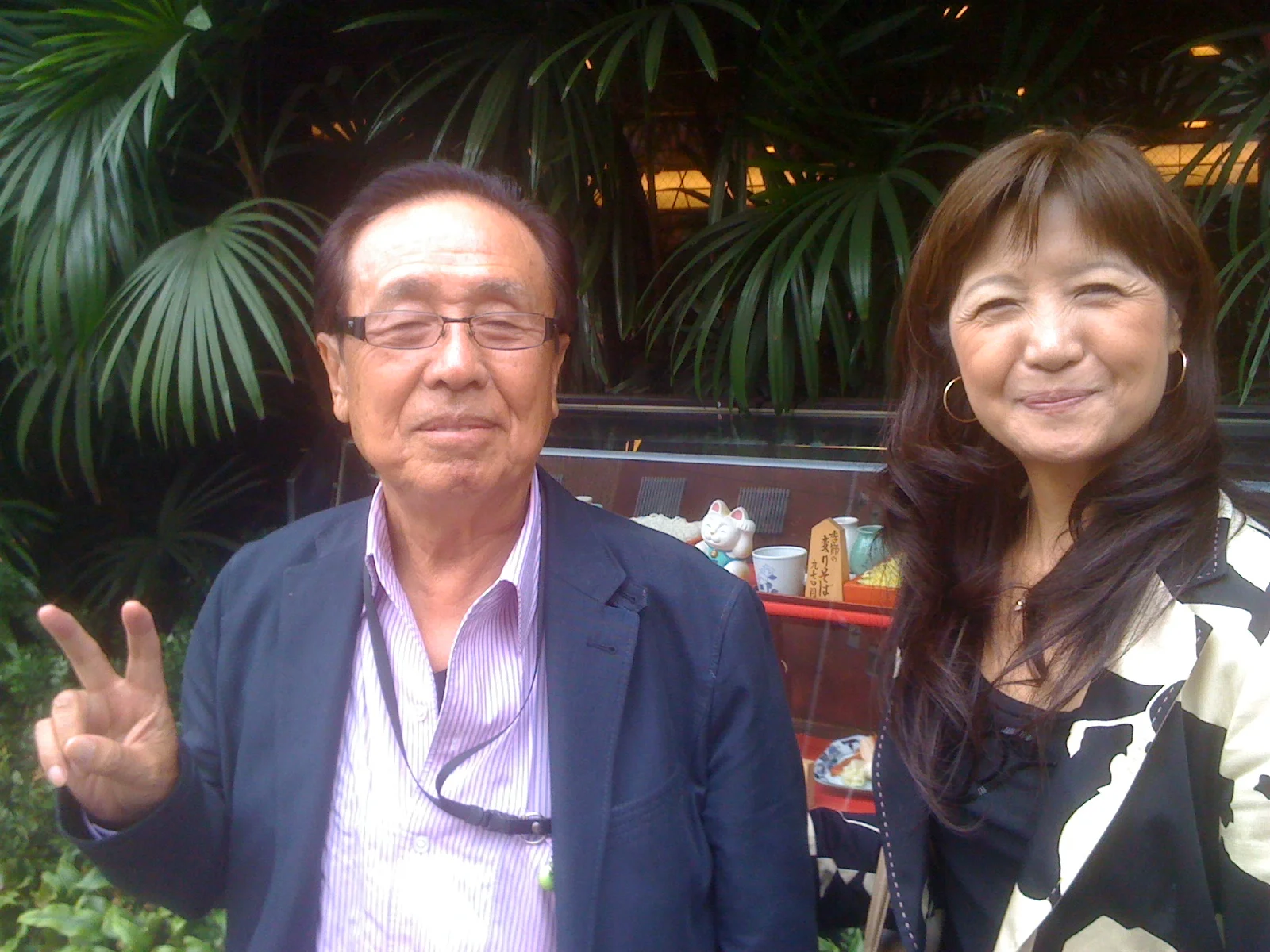On a Tuesday in February of 2009, Chris and I made our way by taxi after a client meeting over to the office of Kitaro Watanabe and his daughter, Nishida-san, in the Atlas Building in Azabu Juban. The imposing building sat on one corner of the major thoroughfare leading up to Roppongi Hills and that runs parallel to the Azabu High Street, one block down from where the onsen once stood. The much narrower street which links the two arteries continues in one direction up a hill called Torii Zaka (after the family of daimyos that lived there during the Edo period) and heads towards the seedy nightclub district of Roppongi, along a kilometer long stretch of property which was purchased several years ago by the Mori Corporation as the intended site of their latest ambitious endeavor to reshape the urban landscape of Tokyo. Caught in the maelstrom of the global economic meltdown, the development project had been indefinitely put on hold in 2008.
Going in the opposite direction, the narrow street makes its way across the shoten gai, past the parking lot that replaced the onsen and the Saint Moritz bakery, up another hill known as Kurayami Zaka (or Darkness Hill). The evocative name is said to derive in part from the somewhat gloomy and desolate aspect of the slope, which lies in the shadow of a curving stone wall on one side of the street, across from the squatting, angular presence of the brick-built compound of the Austrian embassy.
At the foot of Darkness Hill, sits a modest intersection exactly one block off the Azabu High Street. I had often walked through the intersection on the weekend, going in one direction or another, but finding little to recommend this patch of pavement. On one corner sat a ramshackle wooden edifice with a barber’s pole outside, advertising the profession of the building’s erstwhile resident. Otherwise, the structure, which must have dated from just after the war, seemed to serve as home for a little old lady – perhaps the widow of the barber – who emerged only periodically to water her plants. At the other three corners of the crossroads stand nondescript modern buildings. All in all, it is an entirely unremarkable corner of the city of Tokyo.
Despite its decidedly ordinary appearance, this intersection witnessed the first tentative steps in the business world of one of the most colorful and intriguing characters of Japan’s bubble years (the 1980s): Kitaro Watanabe. For it was on the corner, diagonally across the intersection from the ramshackle ex-barber shop, in the years when Azabu Juban was engineering its post-war renaissance, that he operated his first business, the neighborhood bicycle shop. Later expanding to provide motorized delivery carts to the neighborhood shops and restaurants, and then to a car dealership selling secondhand Datsuns before finally importing Fords and Chryslers during the boom years of the 1960s, Watanabe’s business expanded in a trajectory every bit as impressive as the country’s ascendance to global economic superpower. But it was neither bicycles, nor delivery vans, nor automobiles that fueled Watanabe’s ever-growing fortune during the forty-five years between the end of the war and the end of the bubble. It was quite simply property. Land and buildings. Real estate.
On the second floor of the Atlas Building, Chris and I entered an unmarked office where we were greeted by a conservatively dressed, kindly looking Japanese woman in her early forties who it turned out was Watanabe’s daughter, Nishida-san. She smiled and bowed, immediately ushering us through the narrow lobby into a surprisingly confined, almost claustrophobic office. The room could barely accommodate the small but solidly built conference table, at the head of which sat Kitaro Watanabe.
He was dressed in a modest, off-gray suit; in lieu of a necktie, a baby blue ascot blossomed between the collars of his white shirt. He removed his glasses as he stood up and shook our hands. He was short and somewhat stocky. He was wearing slippers. His hair was a faded brown, showing no grey despite his seventy-five years. He gestured for us to squeeze around the conference table and, after the exchange of cards and introductions, he launched almost without hesitation into his life’s story.
“I was born in Morishita-cho in the Fukagawa ward, on the east side of the Sumida River in Tokyo, in the year of Showa 8,” he started. (Throughout the interview, he consistently gave dates, even recent ones, using the imperial calendar. The Showa period was that of the reign of Hirohito, who ascended to the throne in 1926. Kitaro-san’s date of birth, therefore, was 1934).
“The area was one of the worst hit by the fire-bombing at the end of the war. My entire family was wiped out, father, mother, my five brothers and sisters,” he said, making a sweeping gesture accompanied by a roaring vocal sound effect – "gacha-gacha!" – which seemed designed to evoke the violence of the attack that had entirely decimated his immediate family. He recounted this horriffic event without apparent emotion or sentimentality, as though telling of something that had no immediate bearing on his personal history. He had been ten years old at the time.
“I had been sent away to school during the war, to keep me safe, on the grounds of a temple in Niigata, along with 33 other kids. Although after the war, there no longer seemed any point in going back to school. I left after the third grade... never went back. On the other hand, you could say, I’m a graduate of the University of Life. The College of Hard Knocks!”
Nishida-san smiled and nodded her head demurely. “And the School of Common Sense,” she added.
To read more of The Azabu High Street, order the e-book from Amazon.


